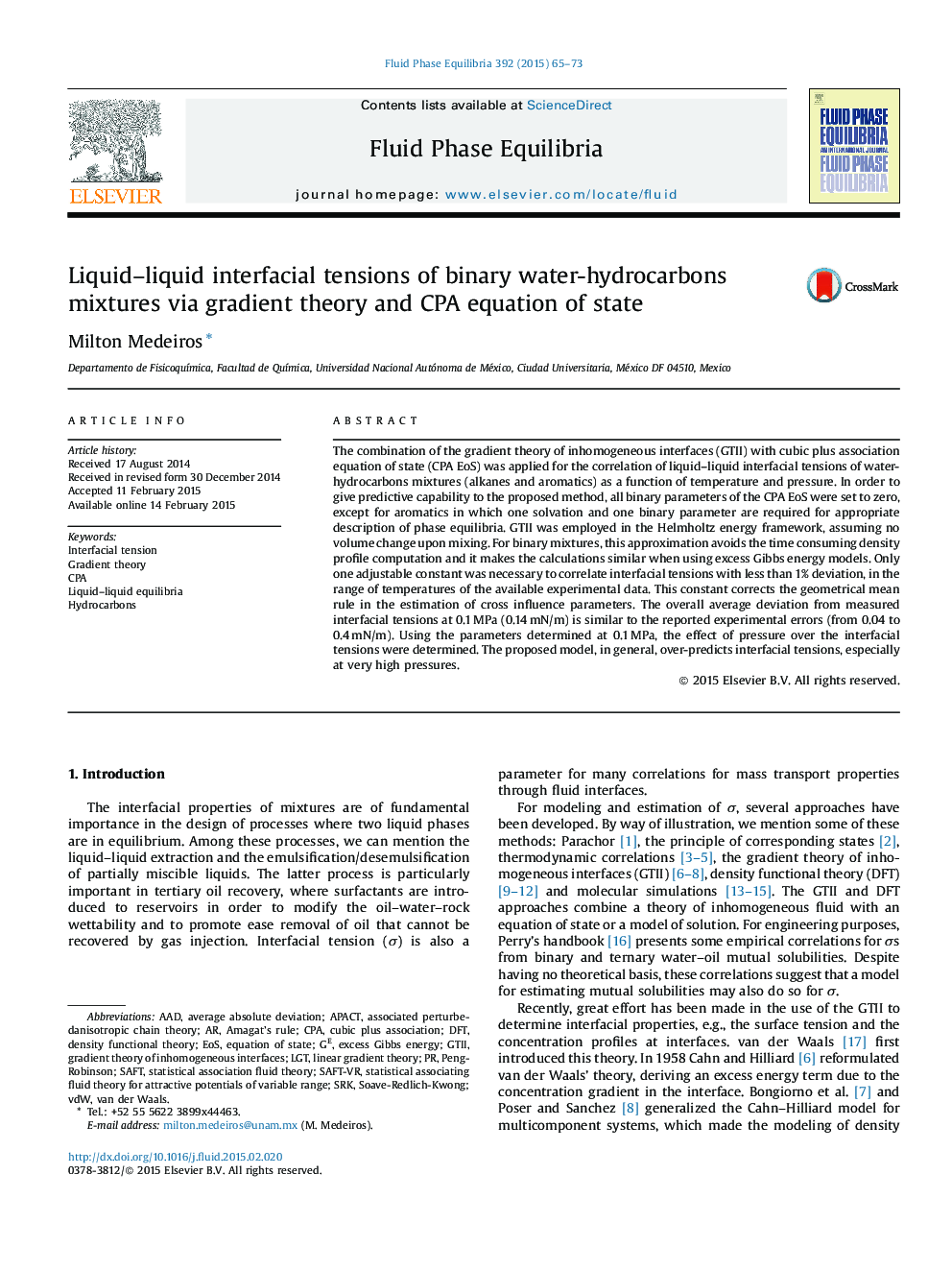| کد مقاله | کد نشریه | سال انتشار | مقاله انگلیسی | نسخه تمام متن |
|---|---|---|---|---|
| 201551 | 460556 | 2015 | 9 صفحه PDF | دانلود رایگان |

• We combined Gradient Theory of fluid interfaces with CPA equation of state.
• We correlated liquid–liquid interfacial tensions with only one constant parameter.
• We made predictions of the pressure effects over interfacial tensions.
• The deviation from measure data was 0.14 mN/m (average) at 0.1 MPa.
• The model generally over-predicts interfacial tensions at high pressures.
The combination of the gradient theory of inhomogeneous interfaces (GTII) with cubic plus association equation of state (CPA EoS) was applied for the correlation of liquid–liquid interfacial tensions of water-hydrocarbons mixtures (alkanes and aromatics) as a function of temperature and pressure. In order to give predictive capability to the proposed method, all binary parameters of the CPA EoS were set to zero, except for aromatics in which one solvation and one binary parameter are required for appropriate description of phase equilibria. GTII was employed in the Helmholtz energy framework, assuming no volume change upon mixing. For binary mixtures, this approximation avoids the time consuming density profile computation and it makes the calculations similar when using excess Gibbs energy models. Only one adjustable constant was necessary to correlate interfacial tensions with less than 1% deviation, in the range of temperatures of the available experimental data. This constant corrects the geometrical mean rule in the estimation of cross influence parameters. The overall average deviation from measured interfacial tensions at 0.1 MPa (0.14 mN/m) is similar to the reported experimental errors (from 0.04 to 0.4 mN/m). Using the parameters determined at 0.1 MPa, the effect of pressure over the interfacial tensions were determined. The proposed model, in general, over-predicts interfacial tensions, especially at very high pressures.
Figure optionsDownload as PowerPoint slide
Journal: Fluid Phase Equilibria - Volume 392, 25 April 2015, Pages 65–73